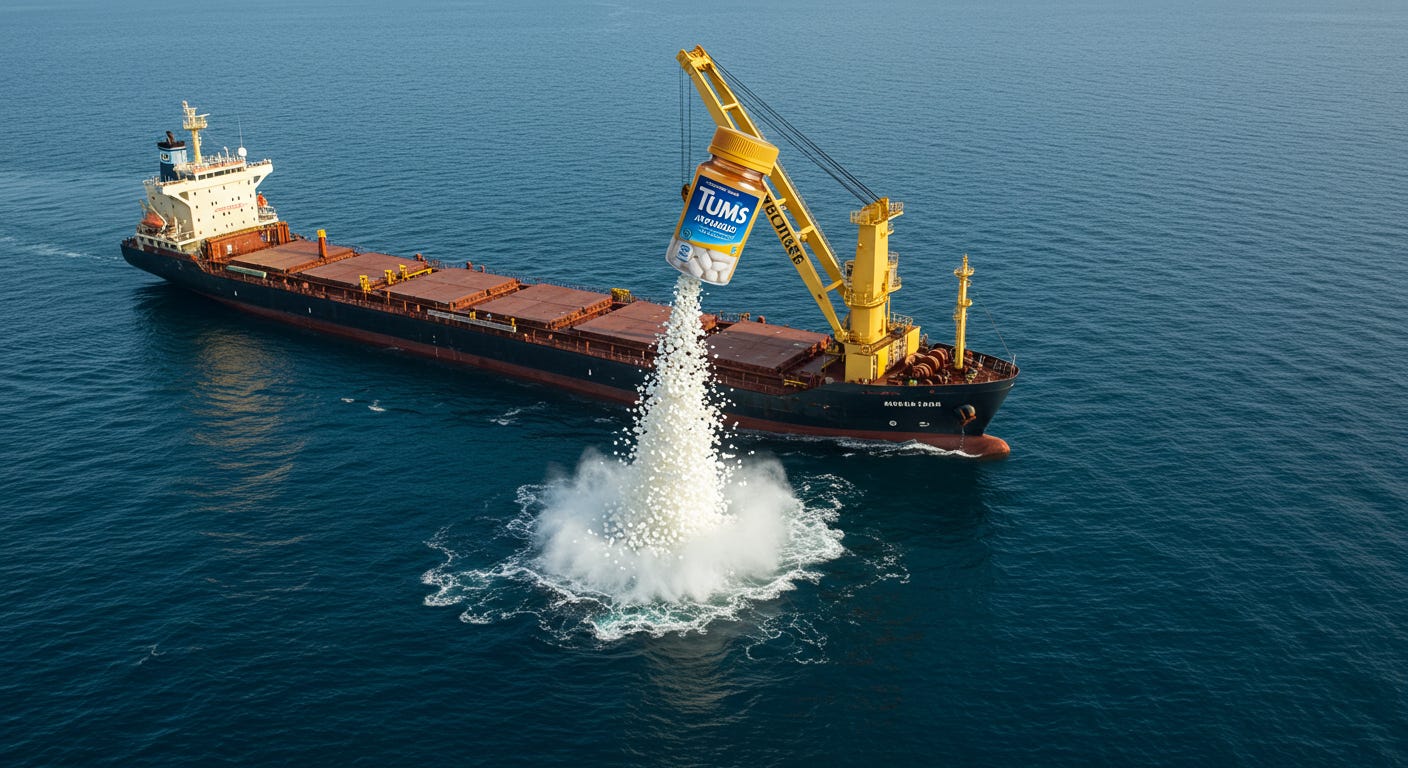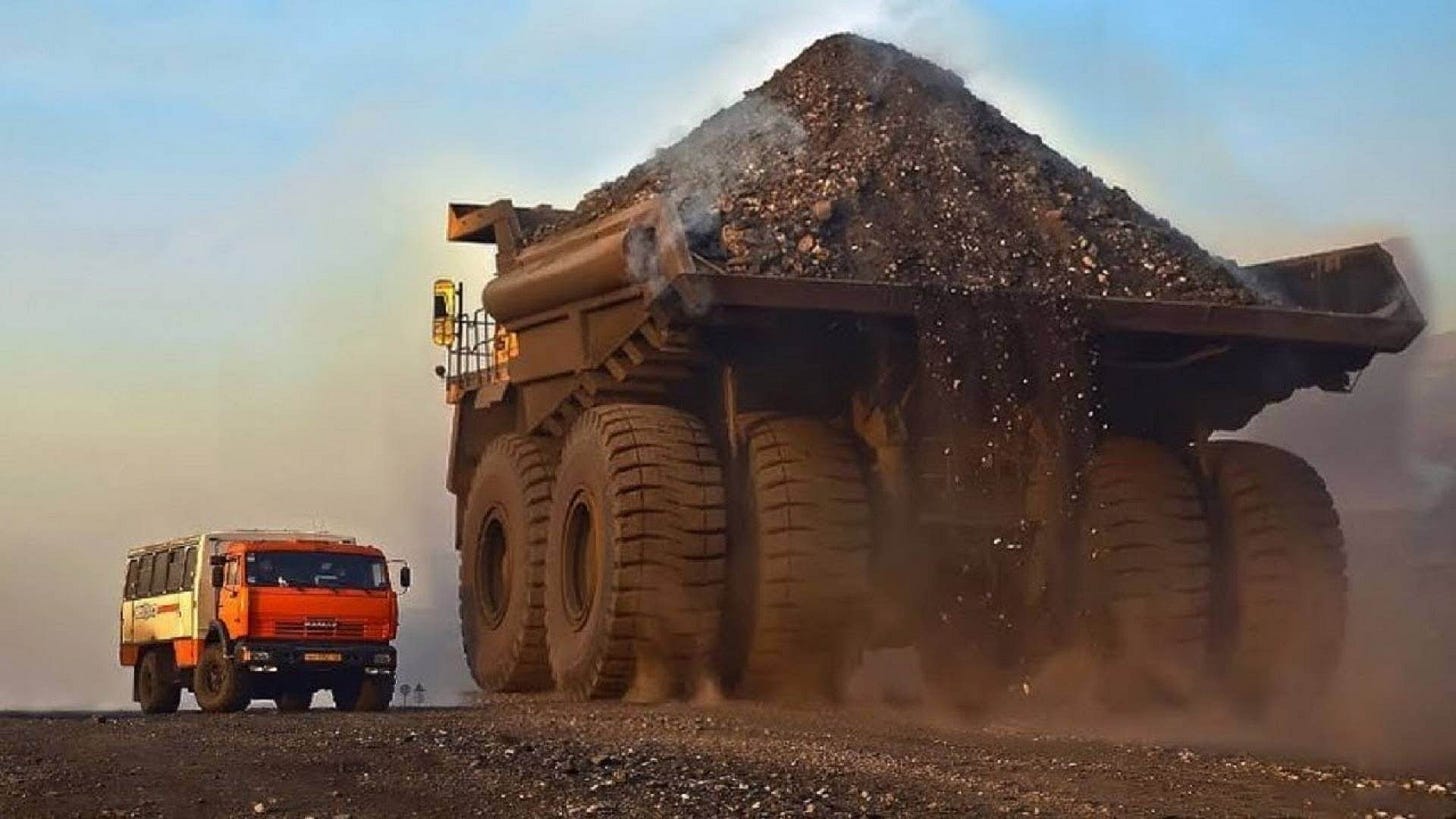The Trouble with Ocean Alkalinity Enhancement
The trendiest marine Carbon Dioxide Removal method just won't scale

When I tell people outside the climate bubble I work on marine Carbon Dioxide Removal, the overwhelmingly dominant reaction is…a blank stare.
People just have no idea wtf I’m talking about.
Of the smallish minority who have heard of mCDR, the overwhelmingly dominant response is “oh, so like Ocean Alkalinity Enhancement?”
Sigh.
Look, I know it’s a stretch to call any mCDR technique “trendy,” but to the extent one of them has gained currency in the climate world, it’s OAE.
The idea of sprinkling TUMS into the ocean has a certain homespun appeal. The science is refreshingly simple — you don’t need to know anything beyond 10th grade chemistry to understand that a base neutralizes an acid, and a less acidic ocean is good both for ocean ecosystems and for carbon removal.
What’s not to love?
The ratios.
The ratios is what’s not to love.
To remove one ton of carbon dioxide through Ocean Alkalinity Enhancement, you have to sprinkle something in the neighborhood of 1.6 to 2 tons of alkaline material into the water. That’s just chemistry.
That 1:1.6 mass ratio (to say nothing of 1:2) makes OAE economics brutal.
It implies that to remove the 10 billion tons of carbon dioxide per year we’d need to dump 16 to 20 billion tons of alkaline material into the ocean.
I get it that at these scales everyone’s eyes go googly and nothing seems to make sense anymore. But the sheer amount of stuff we’re talking about here is properly bananas.
To move the needle at climate scale, an OAE-deployment would require a colossal industrial operation, something not much smaller than the global oil industry today.
The biggest mining truck in the world —the insane BelAZ 75710— can carry 450 metric tons of material at a time. It would take a fleet of 100,000 trucks this size ferrying one load of minerals a day to make a full-scale OAE deployment work. They’d have to take the alkaline mineral to be crushed at huge industrial facilities before taking the powdered product to port terminals to be loaded into a fleet of hundreds of the biggest ocean tankers to then sail off all around the world and sprinkle the stuff in the water.
The costs of such an operation can only be guessed at, but estimates tend to cluster in the $50-$120 a ton range. At ten-gigatons per year, that’s something like 500 billion to $1.2 trillion.
That’s just. too. much.
Worse, it’s hard to imagine how we could bring costs down. We’re not in a situation where there are big efficiencies to be gained or big learning-by-doing economies to be realized.
The 10th grade chemistry is not going to change: we’re not going to discover some magic new mineral that’ll radically change the ratios. If you want to scale with the ratios such as they are, you find yourself fighting gravity. Moving mass tens of billions of tons at a time is always going to be expensive. There aren’t many savings to be made from optimizing the efficiency of industrial transport — we’ve been doing that for two centuries. We picked the low hanging fruit from that tree a hundred years ago, and the top over the last few decades.
Look, maybe I’m wrong.
Maybe we live in a world able to muster the political will to mobilize a trillion dollars a year to create a whole new oil-sized-industry that generates zero cash-flow just to stabilize the climate.
I doubt it, though.
Even in the richest countries, electorates have not proven very forgiving to politicians who raid their pocketbooks to pay for climate solutions.
To work at tens-of-gigatons per year scale, a solution needs to be genuinely low cost. Ten dollars a ton is probably the realistic ceiling. That would imply $100 billion per year — a big but attainable number. The TUMS for the Ocean approach probably can’t work on a hundred-billion-dollar budget. Which means it probably can’t work, period.
The good news is that there is a family of solutions that seems to have a legitimate shot at < $10/ton carbon dioxide removal. The bad news is that even fewer people have heard about Phytoplankton Carbon Solutions than about Ocean Alkalinity Enhancement.
Deep, deep sigh.



Nobody in the climate community and certainly nobody involved in OAE is asking that methodology to reach 10 billion tons a year. That is a ridiculous ask. There are no methods that can reach 10 billion tons per year. Our hope is, that a handful of methods combined can reach 10 billion. Some will contribute more than others, some will be cheaper than others. Most people abandon the notion of a silver bullet in favor of a blended set of solutions.
I love that picture!